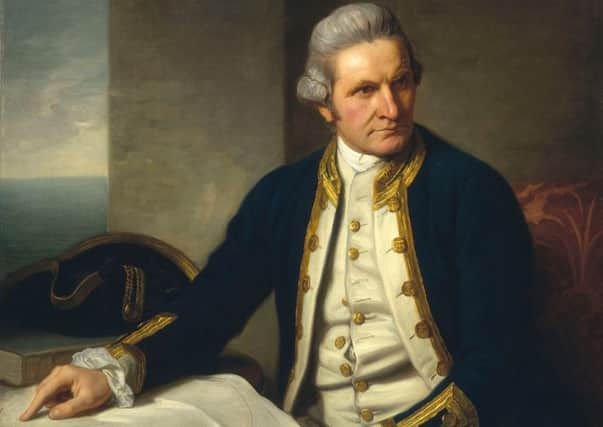Book reviews: Captain Cook - The Journals | Picturing the Pacific - Joseph Banks And The Shipboard Artists Of Cook And Flinders


In the years since Cook’s discoveries first became known, the world has come to seem like a much smaller place, to the extent that we think nothing of hopping on a plane on one side of it, watching a few films, and then reaching the opposite side less than 24 hours later. But far from diminishing Cook’s achievements, this gulf of time and scientific advancement only makes revisiting them more exciting for the armchair adventurer; the imaginative leap more profound.
If you wanted to read Cook’s journals in their entirety, you would need to track down the complete edition published in the mid-20th century by John Cawte Beaglehole, a monumental work of scholarship, long out of print, which runs to 3,350 pages. A more practical alternative, however, is the abridged version edited by Philip Edwards, first published by Penguin in 1999 and now reproduced as a three-volume box set by the Folio Society, with evocative cover illustrations by Tomislav Tomić and a replica of a contemporary map showing the extent of Cook’s travels.
Advertisement
Hide AdAs Edwards explains in his introduction, when Cook returned from his first voyage, in which he travelled to Tahiti to observe the transit of Venus across the sun, mapped the coastline of New Zealand and became the first European to encounter the eastern coastline of Australia, his diaries were turned into an “authorised account” by one John Hawkesworth. When Cook finally read it, while nearing the end of his second voyage, he was mortified to discover that Hawkesworth had taken all kinds of liberties with his original, so from that point on he ensured that he would have full control of any future accounts.
In the preface to the account of his second voyage, Cook pre-empts any criticism of his prose style by noting that he “had not had the advantage of much school education”, but the modern reader might think “thank goodness for that”. His journal entries are crisp, straightforward and completely devoid of literary pretension; as such, they have an immediacy and a sense of urgency that draws you in like a good thriller.
In addition to these written accounts, Cook’s voyages also produced some stunning artwork courtesy of the shipboard artists who, in the days before photography, were a vital part of the process of gathering information about far-flung lands and their inhabitants.
In Picturing The Pacific, art historian James Taylor asserts that aristocrat and naturalist Joseph Banks, who accompanied Cook on his first expedition, “ought to be acclaimed for popularising the placement of professional artists and naturalists aboard British ships exploring the Pacific from 1768 to the mid-1830s”. The book showcases the wide range of work produced by these artists during Cook’s expeditions and the voyages of Matthew Flinders. Many of the images they produced were purely functional – a series of coastal profiles of Australia by William Westall, for example, used as navigational aids, or an extremely precise drawing of a shark by Scottish artist Sydney Parkinson, complete with a close-up of its eyeballs. Others, however, show more artistic sophistication – a dramatic 1772 oil painting by William Hodges titled A View Of The Cape Of Good Hope, Taken On The Spot, From On Board The Resolution, is not far off impressionistic.
Banks may not have ended up travelling with Cook on his second voyage as he had hoped – the Admiralty refused him permission to sail after his various scientific requirements were deemed unacceptable. Between them, however, Cook and Banks were responsible for giving the inhabitants of these islands their first glimpses of the other side of the world, and what wonderful glimpses they were. - Roger Cox
Captain James Cook: The Journals, 1768-1779, Selected and edited by Philip Edwards, Folio Society, £120
Picturing The Pacific: Joseph Banks And The Shipboard Artists Of Cook And Flinders by James Taylor, Adlard Coles, £25